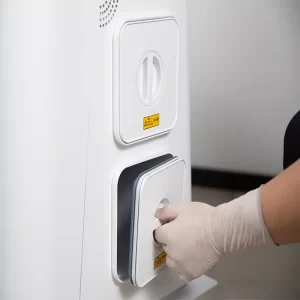When disinfecting respirator components, they must be disassembled and cleaned with a chlorine-containing disinfectant. Heat and pressure resistant components are best autoclaved.
For parts that are not heat-resistant or pressure-resistant, alternative methods can be used, such as hydrogen peroxide plasma sterilization or soaking in 2% neutral glutaraldehyde solution for 10 hours.
Tubing and bags on the respirator should be replaced every 48 hours. If moisture buildup is severe, more frequent replacement is recommended.
Nebulizers should be cleaned and disinfected daily with steam pressure. Disposable humidifiers may be used within the facility, if available.

Additionally, connecting the respirator to an anesthesia breathing circuit sterilizer allows the internal tubing to be cleaned and disinfected. In addition, placing the respiratory mask in the sterilization chamber of the cycle sterilizer can ensure thorough disinfection.
Sterilization of respirator components is a beneficial option to prevent cross-contamination and protect both physicians and patients. By adhering to these disinfection protocols, a hygienic environment in the medical unit will reduce the risk of infection.